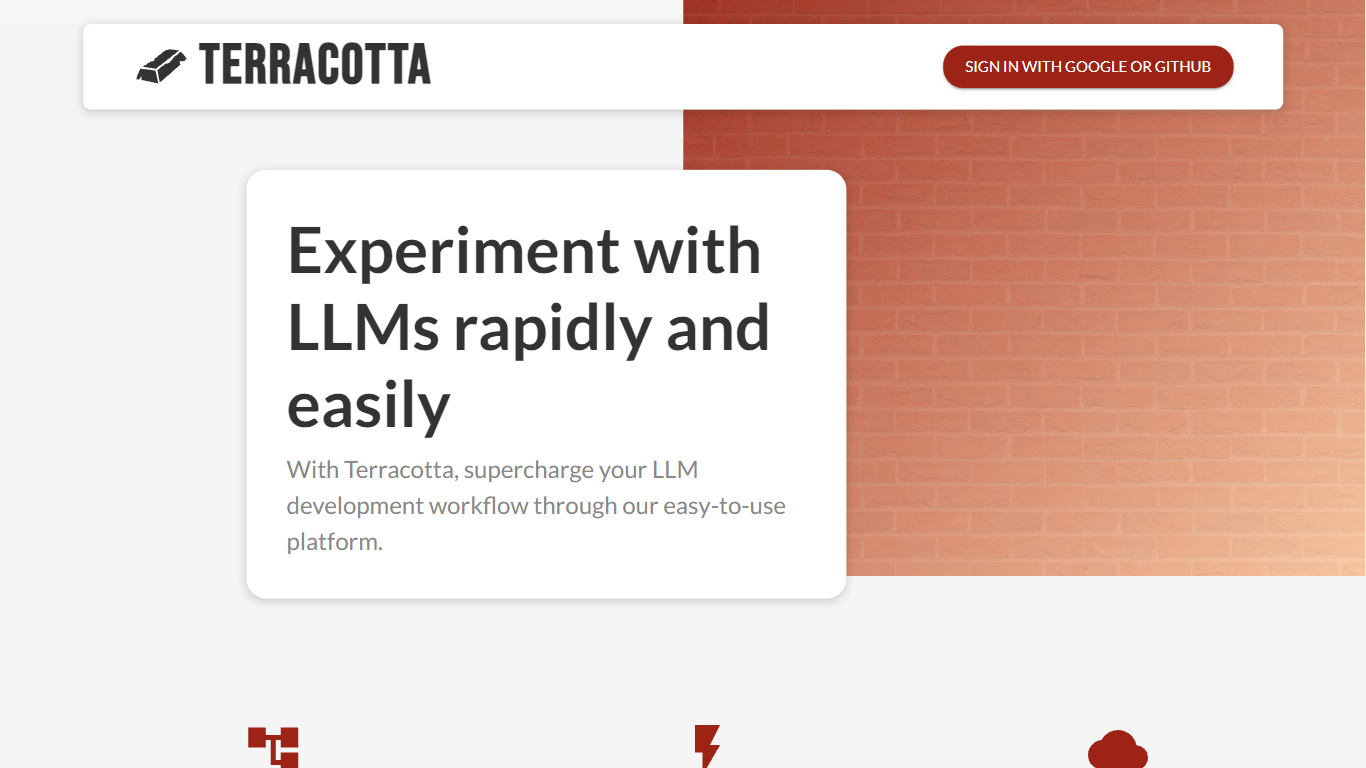Minerva vs Terracotta
When comparing Minerva vs Terracotta, which AI Large Language Model (LLM) tool shines brighter? We look at pricing, alternatives, upvotes, features, reviews, and more.
Between Minerva and Terracotta, which one is superior?
When we put Minerva and Terracotta side by side, both being AI-powered large language model (llm) tools, Neither tool takes the lead, as they both have the same upvote count. Join the aitools.fyi users in deciding the winner by casting your vote.
Don't agree with the result? Cast your vote and be a part of the decision-making process!
Minerva

What is Minerva?
Google Research's Minerva project has made significant strides in solving quantitative reasoning problems using language models, showcasing substantial performance improvements in mathematical and scientific tasks. Minerva operates by parsing and processing questions that include mathematical notation and generating step-by-step solutions involving numerical calculations and symbolic manipulation, all without the need for external tools like calculators. Employing techniques such as few-shot prompting, chain of thought prompting, and majority voting, Minerva has achieved state-of-the-art performance on a variety of STEM reasoning tasks. Through its advanced prompting and evaluation methods, Minerva has become an indispensable tool for exploring complex quantitative problems, offering great potential in scientific research and educational applications.
Terracotta

What is Terracotta?
Terracotta is a cutting-edge platform designed to enhance the workflow for developers and researchers working with large language models (LLMs). This intuitive and user-friendly platform allows you to manage, iterate, and evaluate your fine-tuned models with ease. With Terracotta, you can securely upload data, fine-tune models for various tasks like classification and text generation, and create comprehensive evaluations to compare model performance using both qualitative and quantitative metrics. Our tool supports connections to major providers like OpenAI and Cohere, ensuring you have access to a broad range of LLM capabilities. Terracotta is the creation of Beri Kohen and Lucas Pauker, AI enthusiasts and Stanford graduates, who are dedicated to advancing LLM development. Join our email list to stay informed on the latest updates and features that Terracotta has to offer.
Minerva Upvotes
Terracotta Upvotes
Minerva Top Features
PaLM-based Model: Builds on Google's Pathways Language Model with specialized training.
Advanced Techniques: Employs few-shot prompting, chain of thought prompting, and majority voting for problem-solving.
State-of-the-art Performance: Achieves leading results on STEM benchmarks.
Interactive Sample Explorer: Allows users to investigate Minerva’s problem-solving process.
Wide Application Scope: Useful for scientific research and education, capable of aiding researchers, and enabling new learning opportunities.
Terracotta Top Features
Manage Many Models: Centrally handle all your fine-tuned models in one convenient place.
Iterate Quickly: Streamline the process of model improvement with fast qualitative and quantitative evaluations.
Multiple Providers: Seamlessly integrate with services from OpenAI and Cohere to supercharge your development process.
Upload Your Data: Upload and securely store your datasets for the fine-tuning of models.
Create Evaluations: Conduct in-depth comparative assessments of model performances leveraging metrics like accuracy BLEU and confusion matrices.
Minerva Category
- Large Language Model (LLM)
Terracotta Category
- Large Language Model (LLM)
Minerva Pricing Type
- Freemium
Terracotta Pricing Type
- Freemium
